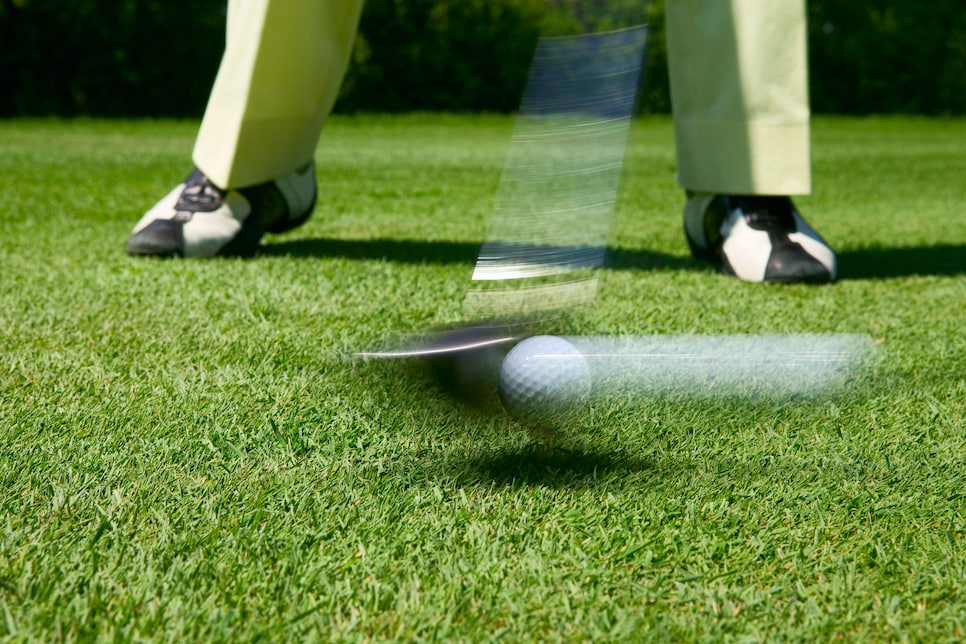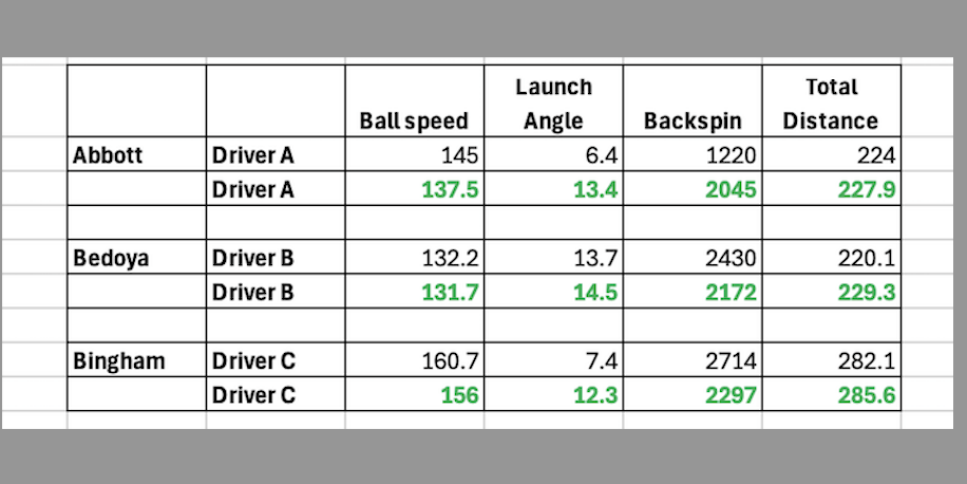
When it comes to a driver fitting, and often any kind of full-swing club fitting, the guiding principle always has been: “Ball speed is king.” This seems obvious. Make the ball go faster and it’s always going to go farther. And generally, this should be your mantra. If you find more ball speed, you’re going to find more distance. But while ball speed may be king to producing distance, it is not everything. And some of our results from Hot List driver testing show plenty of examples of players getting more distance from shots that were not necessarily those that yielded the most ball speed.
What gives? Well, the best total distance is ultimately about the right combination of the three most important ball flight and swing characteristics: Ball speed is first, but launch angle (higher rather than lower) and optimal spin rate for a given launch angle are the key secondary contributors that let you max out your potential for a certain ball speed. Get those other two right and you’ll have a more efficient ball flight that just might produce better distance than simply your fastest hits.
Let’s take a look at some Hot List player testing results as captured by the Rapsodo MLM2Pro launch monitor during last fall’s Hot List Summit at the Reunion Resort in Florida. We’re taking a look at three different players at three different ability levels and three different swing speeds. What we saw was how the most efficient and effective drives featured the optimal combination of ball speed, launch angle and spin rate, not merely the fastest ball speed.
Example 1: 98-MPH clubhead speed
First up is Gary Abbott, a 13-handicap with a 98-mile-per-hour clubhead speed with the driver. Of the 18 different driver models he hit, six produced more distance with less than the fastest ball speed. For example, with one driver Abbott produced a shot with 8 miles per hour less ball speed that still yielded a total distance that was four yards longer than the shot that had the higher ball speed. How? Well, the longest shot featured less ball speed, but the launch angle was seven degrees higher (13 degrees vs. 6) and the spin rate was more optimal, specifically in the low 2,000s in rpm, vs. the low 1,000s. (Note: While we often think low spin is ideal for distance, too little spin means the ball won’t stay in the air.
Example 2: 86-mph clubhead speed
Next was Alejandra Bedoya, a former college golfer who is now a 5-handicap with an 86 mile-per-hour clubhead speed. Of the 15 driver models she tested, the 10 longest hits for each model came from shots with less than the fastest ball speeds. Like Abbott, Bedoya’s most efficient combinations of ball speed, launch angle and spin rate yielded the most distance. In one particular example, Bedoya gave up a mile an hour of ball speed but combined it with an extra degree of launch and 250 rpm less spin. That combo led to nine more yards in total distance.
Example 3: 110-mph clubhead speed
As we move to a player with a faster swing and more consistent center-face contacts, though, we saw that ball speed more often than not won the day. Of the 18 driver models hit by Jack Bingham, who swings at 110 miles per hour, only twice did he record the most distance with a ball speed that was not the fastest for that driver. In one example, he gave up more than four miles per hour of ball speed, but because his launch angle was five degrees lower and his spin rate was more than 400 rpm higher, the shots with the lower ball speed still produced three yards more in total distance.
When you look at these three examples in all, it’s most important to focus on the shots that result with an ideal marriage of greater distance with tighter dispersion. If you think of PGA Tour players as having the most ability and the most dialed-in drivers, it’s telling that tour players only miss the center of the fairway by an average of 22 feet. Percentage-wise, in the last 15 years, they’ve improved that stat a lot more than they’ve improved their average driving distance. (Driving distance has increased 4.2 percent since 2009, distance from the center of the fairway has improved 11.7 percent.)
That efficiency of launch conditions is something that actually is more important the less ball speed (and swing speed) you have. Traditionally, the best LPGA players are optimizing distance for their swing speeds more than PGA Tour players, who can get away with less optimized launch conditions (for instance a negative angle of attack and a lower launch angle) because of their naturally higher swing speeds. Meanwhile, LPGA players are hitting up on the ball and launching their drives two degrees higher with the same spin rate as PGA Tour players. It’s why some LPGA players use drivers with less loft successfully than PGA Tour players who swing 30 miles per hour faster.
To be clear, more ball speed is usually going to yield more distance, as long as you’ve got the launch conditions dialed in optimally. That word “optimally” is important. It isn’t a fixed set of conditions. The optimal launch conditions for you are tied to your swing speed and the way your swing delivers the clubhead to the ball. If your move is more of a downward strike on the ball, there is a different set of optimal conditions than if your swing is a more upward strike.
The numbers on a launch monitor are a critical part of fitting, but they are best when they are most consistent. After all, total distance doesn’t lie, and neither does accuracyt. As Ping’s Chris Broadie, head of fitting science, writes in a recent post on the company’s Proving Grounds blog, “Instead of trying to force all golfers into a positive angle of attack with high launch and lower spin, we should customize our fitting methods to identify each player’s optimal launch and spin—and keep unlocking distance.”


